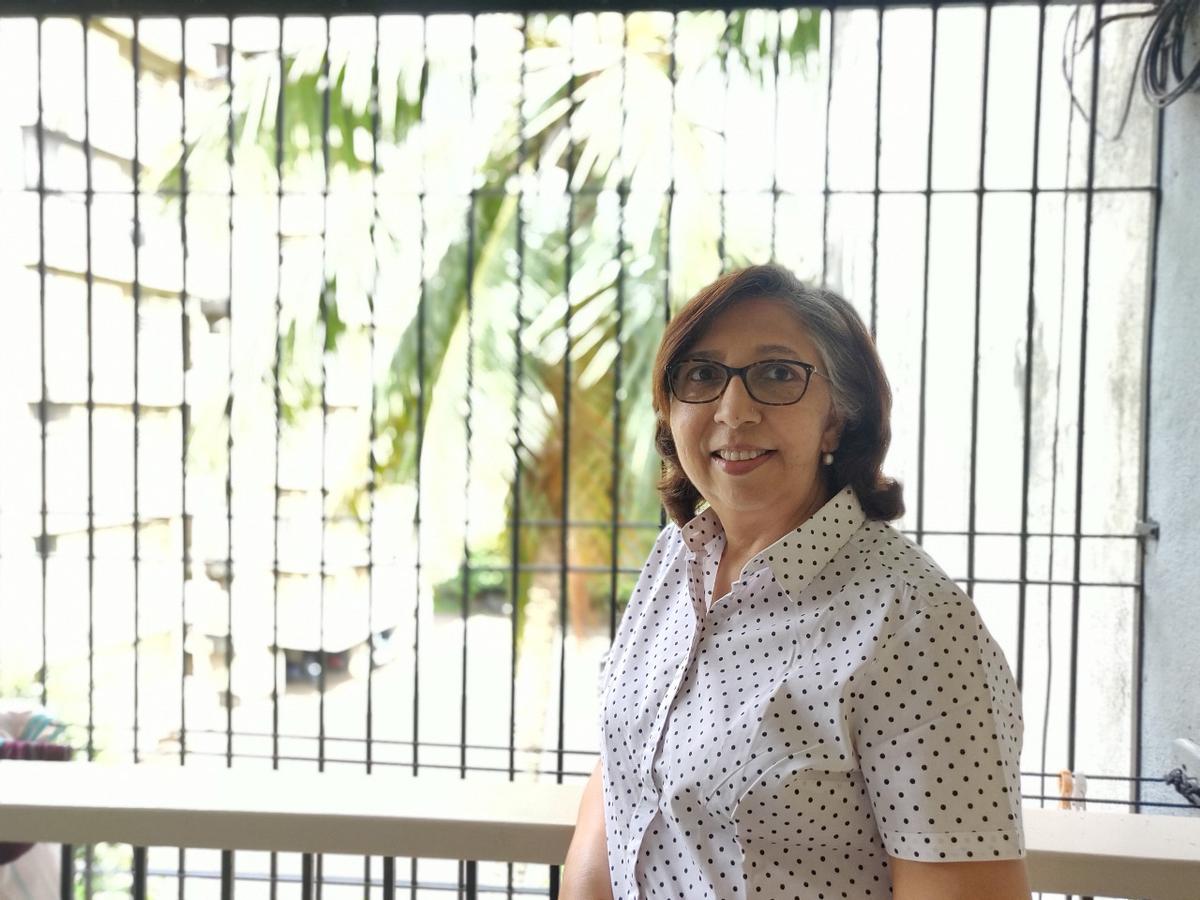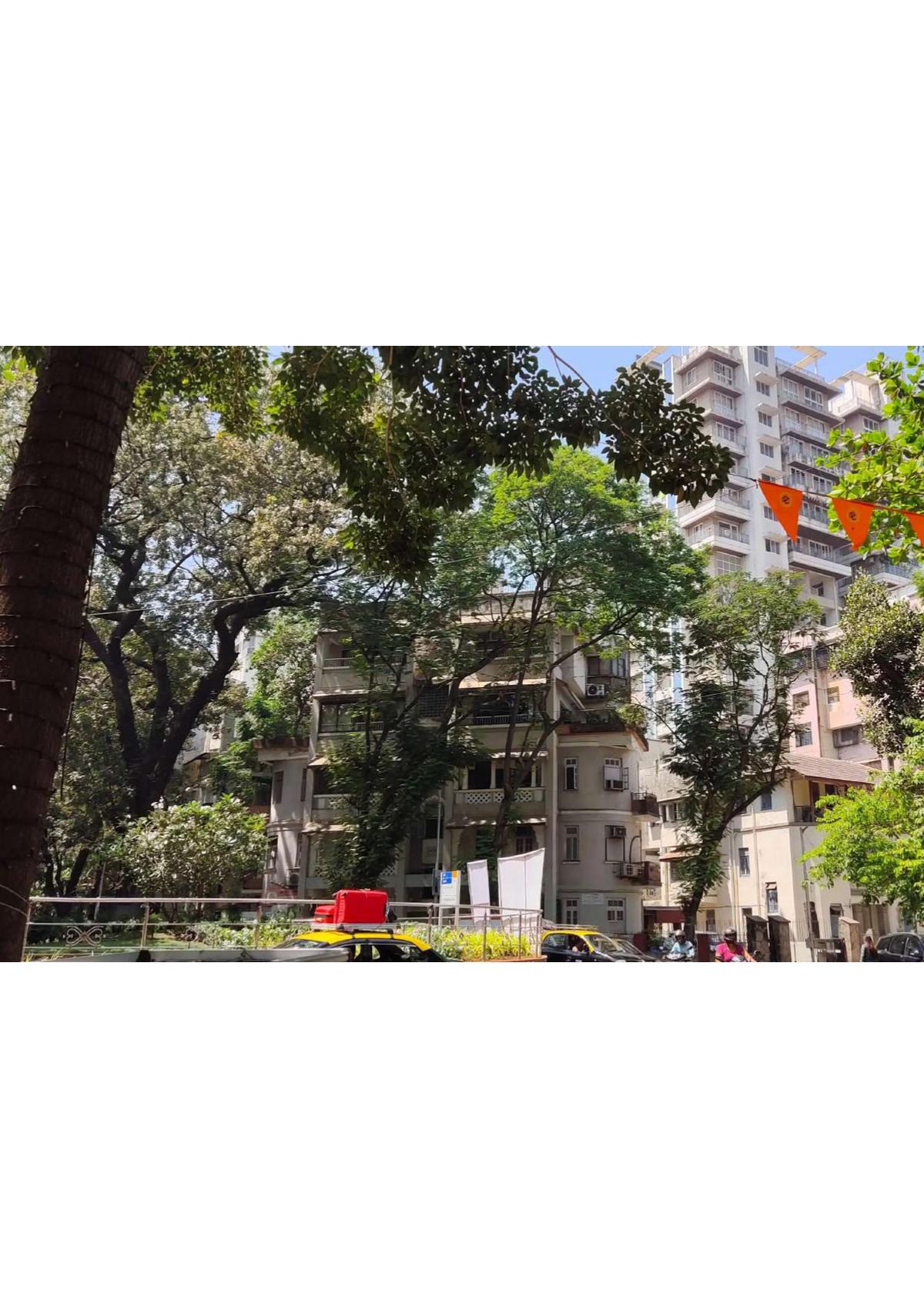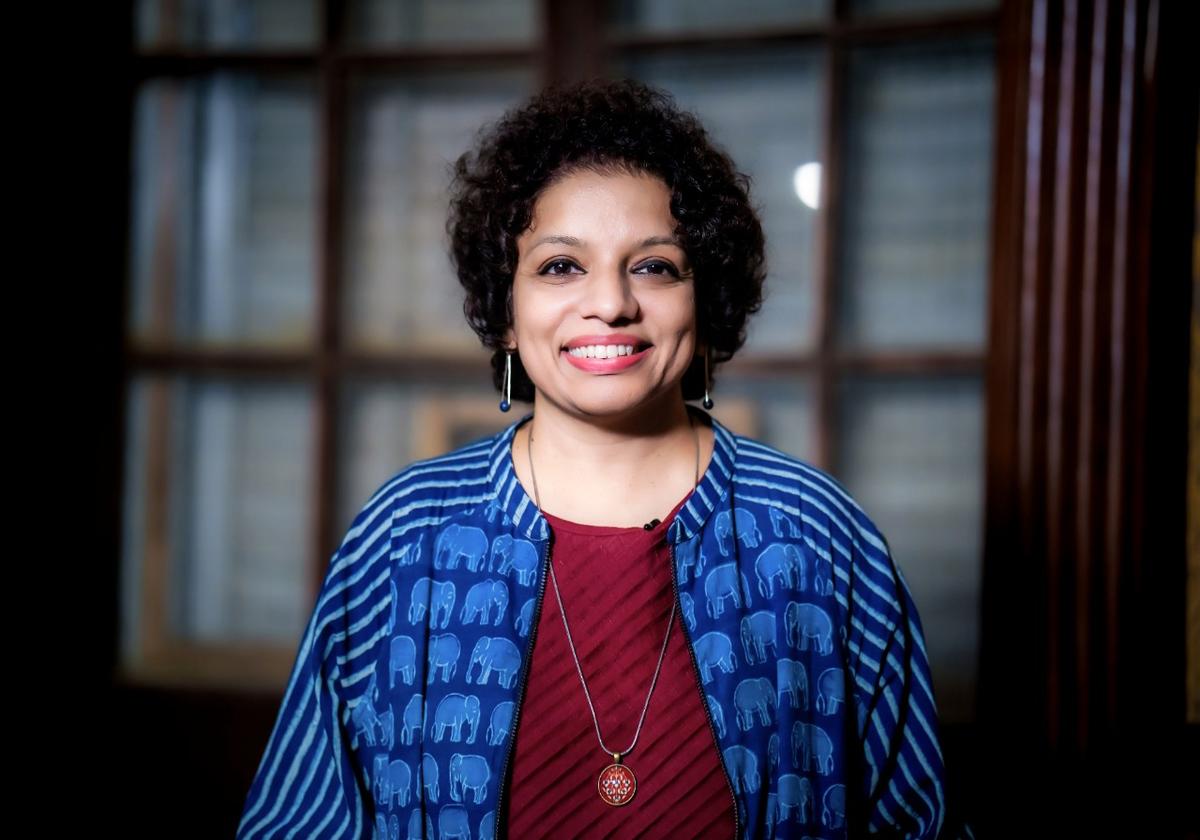What makes a building an Art Deco artefact? Which Indian city has the second-largest number of Art Deco buildings in the world? These questions have become particularly prescient in the centenary year of the Art Deco movement, started at the 1925 Exposition Internationale Des Arts Décoratifs et Industriels Modernes in Paris.
Hari Niwas in Dadar.
| Photo Credit:
ArtDecoAlive!
To commemorate this historic milestone, Art Deco Alive! — a twin Miami-Mumbai group founded by cultural philanthropist Smiti Kanodia (Mumbai) in association with Miami-based Salma Merchant Rahmathulla and Gayatri Hingorani Dewan — celebrates the shared architectural legacy of the two cities that have the most visible Deco skylines and its layered cultural expressions. The Miami leg of the celebration commenced at the beginning of October, while November sees Art Deco programming across Mumbai (November 7-25) with symposiums, heritage walks, typology walks, jazz nights, film screenings, art workshops and more.

Sandeep Dahisarkar
In collaboration with the Miami Design Preservation League and Art Deco Mumbai Trust, the founders reminisce about the cross-continental collaboration. “Even today, Art Deco’s influence is visible in the way both cities express design, fashion, and lifestyle. In Mumbai, for example, Deco’s geometric forms and streamlined elegance seep into graphic design, interiors, and even textiles. Miami, on the other hand, celebrates the vibrancy of the style in colour palettes, signage, and hospitality design,” explains Kanodia. Rahmathulla adds, “What fascinates me is how Deco still connects the two cities in spirit. It reminds us that design can be emotional and alive — that it can tell stories of progress and hope without losing its soul.”

Gayatri Hingorani Dewan.
Decoding Deco across Mumbai
While Mumbai’s Marine Drive is famous for its Art Deco skyline, author and journalist Fiona Fernandez, who will lead a Deco walk in Matunga (November 16), says pragmatism has driven more proliferation of the design sensibility than any stylistic celebration. “The Art Deco buildings in the Matunga-Dadar area emerged with the intent to create affordable housing for the largely cosmopolitan middle-class residents in the 1940s and 50s around the radius of the Dadar Tram Terminus, by the Bombay Improvement Trust,” she says. “The overarching layouts in these buildings across Hindu Colony exhibited some of the core principles of Indian Deco architecture, including well-ventilated balconies, geometrical patterns [with Indian motifs such as swastikas and even rangoli designs, in some cases] and spacious apartments.”

Kirtida Unwalla

Nikhil Mahashur

Salma Merchant Rahmathulla
For those who see the iconic Eros Cinema as a flagbearer of the movement, adaptive reuse and a love of the movies will be discussed by Kirtida Unwalla, who spearheaded the Eros Cinema restoration project. “If the city values its cinema culture and its architectural significance, one the most effective gestures would be to adapt historic cinema houses for new uses while enabling a balance that keeps the heritage memories alive for posterity,” she says. Incidentally, Regal and Liberty Cinemas in south Mumbai with their iconic facades also pay homage to the Deco movement that swept the city in the 1930s. ‘Ocean Drive To Marine Drive: Mapping A Century Of Deco’, at Dr. Bhau Daji Lad Museum, will mirror the Miami exhibit, showcasing Art Deco artefacts from private collections (November 7-25, open entry).
Taking Deco from Mumbai to Paris
Atul Kumar, founder of the Art Deco Mumbai Trust, attended the 17th World Congress on Art Deco in Paris (October 20-25) celebrating the centennial of the 1925 exhibition. He presented an academic paper ‘1925 Paris to Bombay – The Influence of European Artists on India’s Emerging Modernity’. Art Deco Mumbai Trust was the only representative from South Asia – sharing the city’s distinctive contribution to the worldwide architectural movement.

Churchgate Street walk.
| Photo Credit:
Nikhil Mahashur
On November 12, an exclusive walkthrough of Balasinorosaurus Deco, by Aashim Tyagi, a photography exhibition (by invite) featuring a confluence of Gujarati identity and the Deco spirit at the Dilip Piramal Art Gallery, NCPA, will be held. For those keen on exploring the city on foot, walks and workshops can be booked on ‘Urbanaut’ (urbanaut.app/ about-artdecoalive) for a fee. A block party around Churchgate will take Mumbaikar’s past iconic hospitality establishments: Gaylord, Pizza By The Bay (housed in the iconic Deco landmark, Soona Mahal), Mockingbird Cafe Bar, Foo, the Ambassador Hotel, and other eateries.

Matunga walk
A walk to remember
The Churchgate Street Rewind Walk by architect Nikhil Mahashur will start outside the legendary Astoria Hotel that once played host to Chris Perry, the ‘King of Cha Cha Cha’ and the ‘Man with the Golden Trumpet’, who reinterpreted jazz with Konkani strains. Meandering via The Ritz, Mumbaikars will observe The New India Assurance Building, an iconic Deco structure designed by Master, Sathe & Bhuta, built between 1937-39 by Shapoorji Pallonji, with Swadeshi motifs. Mahashur will also lead walks along Shivaji Park (from Savarkar Sadan to Shah Sadan and Udyaan Ganpat, featuring buildings emblazoned with ocean wave motifs, Deco typography in the Devnagiri script, and sunbursts). “The Churchgate walk, along with the more jazzy and glamorous Deco details, will also be about the melting pot of cultures there — the art, the food and the cinema. The Shivaji Park walk will be about the simple Deco buildings in the area, the park and the people who lived in the area,” says the architect.

Smiti Konodia
Reflecting on what this cross-continental meditation on Art Deco truly hopes to capture, Rahmathulla adds, “It’s less about aesthetics and more about values. People are returning to the clarity, balance, and optimism that defined the movement. Of course, there will always be surface-level nods to the style, but what truly excites me is the deeper conversation about proportion, sustainability, and intention.”
Rajesh Mansion
For architect Sandeep Dahisarkar, who investigates Deco influences across the suburb of Matunga, these events celebrate a moment in history while reaffirming a resolve to conserve material heritage. “Bal Gangadhar Tilak’s followers in Parle East walked in his footsteps to carry forward his legacy for Swaraj. His teachings were embraced by the organisations named after him, housed in Art Deco style structures. This combination of nationalism with modern architecture makes Parle unique in Mumbai city,” he shares.

While most events are open to the public, some are via bookings and others by invite only. Art Deco Alive! endeavours to capture the imagination of a new generation of city dwellers. “We want them to notice not just façades, but the stories behind them — the social aspirations, the technical innovations, the cultural context. Deco is about optimism, craftsmanship, and a vision of modern living, and we hope our walks make people appreciate how these ideas shaped Mumbai’s identity,” concludes Kanodia.
For details on events: artdecoalive.org/mumbai
All that jazz
Deco finds resonance in jazz, including a jazz on the bus workshop for children on November 9, a jazz soiree on November 11 at The Taj Mahal Palace, and a jazz evening at Soho House on November 14.
Block party: Churchgate Deco trail
It will highlight iconic Deco-era hospitality stops: Gaylord, Pizza by the Bay (soona mahal), Mockingbird Café bar, Foo, and the Ambassador Hotel.
The freelance writer is based in Chennai.
